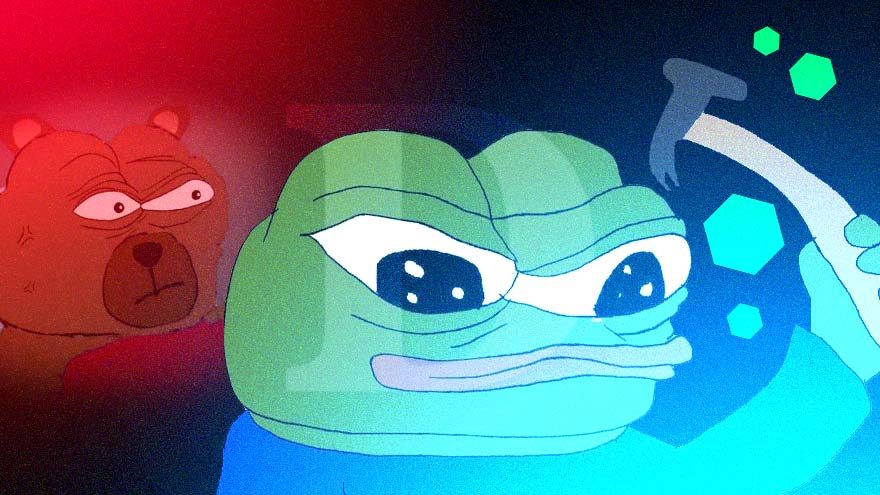Pplpleasr on Sudden Stardom and the Future of Decentralized Storytelling
So you just became internet famous. What now? This is the situation Emily Yang faced in March 2021. Better known in the NFT area as pppleasr, Yang’s was a different kind of fame. Instead of going viral on social media, Yang’s fame came with a half million dollar payout.
After the monumental 310 ETH (around $530,000) sale of Yang’s NFT, titled x*y=k, the budding artist was propelled to Web3 stardom. Not only did she become a niche internet micro-celebrity overnight, but her influence immediately spread throughout the NFT space, fueled by the creation of her very own DAO.
Like other NFT success stories, Yang’s newfound notoriety was the culmination of years of creative output and continual adaptations to extenuating circumstances. And while internet fame can be exhilarating, it’s also wonderfully fleeting. So how should a person, especially someone active in a space that thrives on anonymity, react to their entire life becoming public? As Yang puts it, the key is to remain humble and curious.
“At the same time, I have gained a lot more confidence, but also realize how much there is to learn,” Yang said in an interview with nft now. And while she’s neither the first nor the last to emerge from apparent obscurity into the NFT space, her whirlwind journey to fame is truly unique.

The origin of pplpleasr
Yang laid the foundation for her identity as a multidisciplinary artist before her name trended on Web3 Twitter. In the days before her “high quality meme generator” influence, she took inspiration from Pixar films, and pursued a career in 3D animation after graduating from UCLA with a Design Media Arts degree in 2015.
After finding work as a visual effects artist in her post-college years, she designed assets for feature films such as Batman v. Superman, Dream ladyand Star Trek Beyond. Her achievements working in and for production studios eventually earned her a job offer in 2020 as a digital artist at Apple. But when the offer was rescinded in the wake of the COVID-19 pandemic, the unemployed Yang turned around and sought new ways to support himself.
Around this time pplleasr was born on social media. Joining Twitter in 2020, Yang became involved in the DeFi summer, which seemed natural given her basic knowledge and interest in crypto. The summer of DeFi was a period in the sunny months of 2020 that saw the crypto industry wake up to the promising sector of decentralized finance (DeFi). Throughout the summer and fall, Yang went viral again and again from the original animations she created for prominent DeFi platforms such as Pickle Finance, Harvest Finance, SushiSwapand others.
After a short time as a full-time meme generator, Yang was commissioned by Uniswap to create an artistic interpretation of the decentralized exchange’s (DEX) newly updated algorithm. Little did Yang know that her entire life was about to change, as the auction of the Uniswap video (x*y=k) was imminent, a group of many superfans took action to pool resources and win the 310 ETH bid per piece , creating PleasrDAO in the process.
What comes after NFT fame?
At the time of writing, it has been more than a year and a half since Yang broke into NFT stardom. While her name may not make daily headlines, her drive to create something unique and lasting has become as much a part of her celebrity as her first achievements.
With PleasrDAO on an ongoing mission to collect culturally significant digital art, and the Fortune Journalism PleasrFund—funded in part by proceeds from Fortune and Yang’s NFT magazine cover collaboration—continuing to make an impact in the NFT space, Yang seems to have settled into her life as a public figure. No longer seeking to make ends meet, she spends her time building the collaborative decentralized storytelling project Shibuya with another noted crypto artist, Maciej Kuciara.
“After Uniswap NFT and the Fortune cover, I was trying to find a little more purpose for my next big project. And I wasn’t personally super interested in any of the NFT projects that happened,” Yang said. “I have a little more interest in content and storytelling in longer form, so selfishly I wanted to find a way to channel that.”
Through Shibuya, Yang and Kuciara launched White Rabbit, an animated series with a plot dictated by those who have collected “producer passes” in the form of NFTs. As a project that Yang says is the culmination of her career so far, Shibuya seems to serve as both a passion project and a logical next step for the developing creator.
“We kind of want to [Shibuya] to be A24 to Web3. Think of any A24 film or IP. You only associate A24 with good content,” said Yang. “I feel like quality content in the Web3 space is lacking right now. I think it has to do with the fact that a lot of people in the space don’t come from a content creation background.”
As both Yang and Kuciara are well versed in the ins and outs of the animation production process, the lack of quality content in Web3 and their expertise in the field are surely driving factors behind the project. And as Shibuya grows, Yang says she’s more than happy to stake her reputation on the platform’s ability to become a trusted source of decentralized entertainment.
Cope with the ups and downs of being an NFT hotshot
However, when Yang isn’t focused on building the future of decentralized storytelling, she can often be found traveling, whether for NFT and Web3 events, collaboration opportunities, or simply for fun. Her nomadic and energetic nature helps to highlight the humanity shared by everyone within the NFT space, regardless of status or prestige.
The pace of the NFT space can often feel too fast to keep up with, leading many to try to connect 24/7. But Yang says she believes there is still value in patience and learning things over time. This belief has undoubtedly helped her navigate the astonishing nature of her own progress.
“Many of us forget this notion of delayed gratification… I think that by attending high-profile events, you realize how small we actually are,” Yang said. “Web3 can open up a lot of possibilities, but many people don’t realize that in the grand scheme of the world, there is still a giant mountain to climb, and our little hill of crypto and NFTs is quite small.”
Considering the toll that the blockchain industry can place on one’s mental health, tips and tricks from a success story like Yang could prove invaluable to those looking to “make it” in the NFT space. While a one-size-fits-all solution doesn’t exist for those seeking NFT stardom, Yang emphasized the importance of tempering your drive to become the king of your little hill, as “the element of remaining humble is important to allow yourself to climb even more.”


